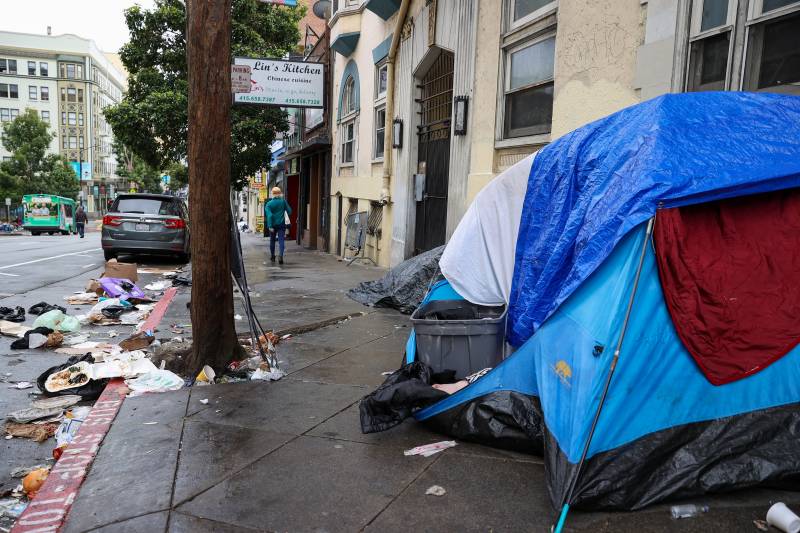Updated 12:30 p.m. Friday
Despite a flood of federal and state dollars spent to keep people off the streets during the coronavirus pandemic, homelessness in the Bay Area continued to increase in the last three years — although not by as much as many had feared.
The population of housed and unhoused people increased by a total of almost 9% — to more than 35,000 people — across the seven Bay Area counties that reported preliminary data on Monday.
Among them, only San Francisco reported a slight decrease, of about 3.5%, even as the city still counted more than 7,700 unhoused people. The city’s unsheltered population — people sleeping outside and in vehicles — dropped by 15%, while those living in shelters and transitional housing grew by 18%.
“We have a lot of work to do, but this shows that we are moving in the right direction,” Mayor London Breed said in a statement. “The investments we have made and will continue to make, as well as our improvements in strategy around outreach and connecting people to resources are all working together to help get more people off the street.”
Contra Costa County saw the region’s steepest spike since the 2019 count, with the number of unhoused people up nearly 35% (to almost 3,100). In neighboring Alameda County, homelessness jumped nearly 22% (to more than 9,700), including a 24% increase in Oakland.
Meanwhile, Santa Clara County, the largest county in the region, reported a more than 3% uptick, with an 11% jump in the city of San José.
In the North Bay, Marin reported an 8.4% increase over 2019 rates, while Sonoma and Napa counties saw 5% and 6.5% increases, respectively, over their last counts in early 2020.
In San Mateo County, where officials have said they are seeking to “functionally” end homelessness by 2023, the number of unhoused people increased by nearly 20% since the 2019 county, topping 1,800, the county reported on Friday.
Solano County is expected to report its preliminary numbers later this summer.
The numbers — which are generally considered a pretty significant undercount of the actual unhoused population — come from tallies of people sleeping on streets, in vehicles and in shelters on a single night in February. Counties must complete the count every two years to determine funding for homelessness programs (the 2021 count was postponed due to the pandemic).
More detailed information about each county’s unhoused populations, including age and racial demographics, is expected to come out this summer.

